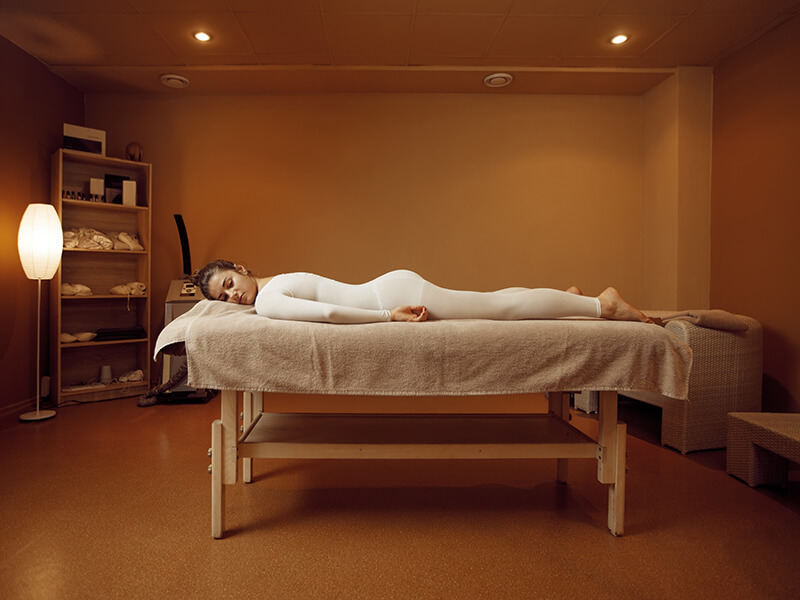Massage tables are generally pretty standard from spa to spa. Certain clients need accommodations, and sometimes a bolster simply won’t cut it. Depending on your specific needs, medical conditions, and mobility requirements, you may need to call around to different massage spas to ensure you receive the best massage possible. Here are just a few of the different types of massage tables used by massage therapists.
Pregnancy Table
A pregnancy massage table has a removable cutout that allows space for a pregnant person’s belly and breasts to rest comfortably without the body’s pressure resting on it. The cutout can be adjusted to offer gentle support and cradling of the belly. These are also useful for clients with a larger pannus. If a pregnancy massage table is unavailable, the massage therapist may have a pregnancy massage cushion designed similarly with a cutout for your comfort. When booking an appointment, be sure to mention your pregnancy and inquire about accommodations.
Trifold Massage Table
A trifold massage table allows one part of the table to be raised, offering back or leg support depending on the client’s positional needs. Those with certain spinal conditions, spinal fusions, vasovagal nerve problems, and other concerns may benefit from the use of a trifold massage table.
Electric and Hydraulic Massage Table
Some clients are unable to raise themselves onto a massage table. An electric or hydraulic table allows the table to be lowered so that the client can transfer or be transferred to the massage table. The massage table is then raised to the height that the therapist prefers. These tables are beneficial for those with mobility issues.
Extra Wide Massage Table
For larger clients, an extra-wide massage table may be necessary to ensure the comfort and safety of the client and the massage therapist. Extra-wide massage tables tend to have higher load maximums and increased structural support.
Extra Long Massage Table
Clients who are above average height may need longer tables to accommodate their size. However, many tables do come with attachments that can extend table length.
Massage Chair
Clients who cannot, for whatever reason, receive a massage in the prone positions may opt for a chair massage. Massage chairs allow the client to sit comfortably, face down, and gently inclined while offering support to the legs, arms, and head. This position allows the massage therapist access to the entire back, neck, shoulders, and arms. Though the therapist will not be able to work on the client’s lower extremities, a massage chair offers compromise so that the client still receives the benefits of massage.
If you require special accommodations, ask your therapist what they can offer to best support your needs. If a certain massage spa cannot accommodate your needs, feel free to call around to find a spa that will. You may want to ask your primary care physician or medical care team for recommendations to a massage therapist that is equipped to handle your level of care.
